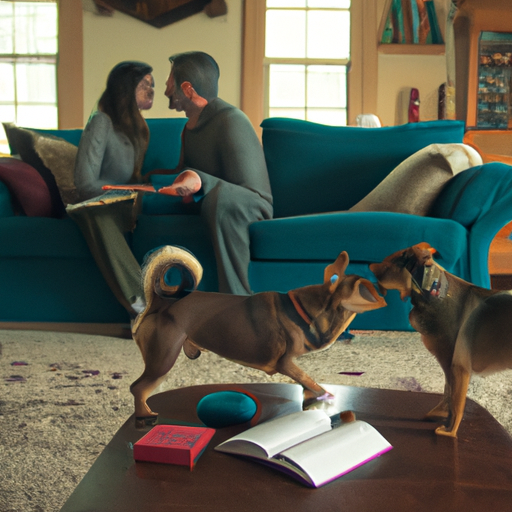Preparing for the Introduction
You’ve decided to add another furry member to your family. That’s great! But before you introduce this new addition to your resident dog, there are a few things you need to consider.
- Understanding your dogs’ temperament: Every dog is unique. Some are social butterflies, while others are more of the lone wolf type. Understanding your dogs’ personalities will help determine how to approach the introduction.
- Creating a neutral environment: This is crucial to avoid turf wars. You can do this by removing your resident dog’s toys, food bowls, and beds from the common area.
- Equip yourself with treats: Treats act as a positive reinforcement and can help keep your dogs calm during the introduction.
The Introduction Process
The introduction process can be nerve-wracking, but with patience and careful planning, you can ensure a smooth transition. Here’s a step-by-step guide for you:
- Begin the introduction in a neutral location.
- Keep the dogs on a leash at first.
- Allow the dogs to sniff each other.
- Look for positive body language.
- Gradually increase their interaction time.
Monitoring the Dogs’ Interaction
This is where your keen eye and intuition come into play. Here’s how to decipher dog body language:
| Positive Signs | Negative Signs |
|---|---|
| Loose body movements | Stiff body |
| Wagging tail | Raised hackles |
| Play bows | Growling or snarling |
If you notice any negative signs, calmly separate the dogs and try again later.
Establishing Co-existence
Once your dogs are comfortable around each other, it’s time to establish co-existence.
- Feeding separately: Feed your dogs in separate rooms or at different times to avoid food aggression.
- Separate belongings: Each dog should have their own toys, beds, and food bowls.
- Equal attention: Make sure to give equal attention to both dogs to avoid jealousy.
Handling Conflicts
Even the best of friends have disagreements. Don’t panic if your dogs have a spat.
- Never let them ‘fight it out’: This can escalate and cause serious harm.
- Don’t punish post-conflict: This could lead to resentment and fear.
- Seek professional help if needed: If conflicts continue, don’t hesitate to seek help from a professional dog trainer.
FAQ
Q: How long should the introduction process take?
A: It varies. Some dogs might hit it off instantly, while others may need a few weeks to adjust.
Q: My dogs fought during their first introduction. What should I do?
A: Try again later. Keep the sessions short and positive. If fights continue, consult a professional.
Q: Can I leave the dogs alone together?
A: Not immediately. Wait until they are completely comfortable with each other.
By following these tips, you can make the introduction process a positive experience for your dogs. Remember, patience and understanding are key to fostering a peaceful canine co-existence.



